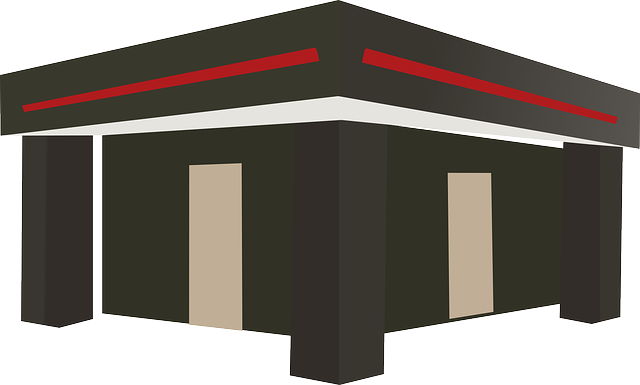Flat roof installation and maintenance require expert knowledge for longevity. Key components include suitable materials like bitumen, EPDM, or TPO membranes, proper flashing, and drainage systems. Commercial and residential flat roofs have distinct maintenance needs, with regular inspections crucial to prevent leaks. Specialists employ advanced repair techniques such as hot-melting and cold-application methods. Choosing the right roofing materials and regular care extend lifespan, offering durable, waterproof protection against environmental elements for both commercial and residential structures. Flat roof specialists prioritize detailed planning, skilled installation, and ongoing maintenance for optimal performance.
“Unleash the power of flat roofs with our comprehensive guide, tailored by flat roof specialists. From understanding intricate installation processes to mastering leak repairs and exploring specialized commercial solutions, we demystify the art of flat roofing. Discover why professional expertise matters for both residential and commercial projects. With a focus on durable materials, innovative designs, and effective maintenance tips, this article is your one-stop resource for all things flat roof services. Elevate your space with expert flat roof solutions.”
- Understanding Flat Roof Installation: A Comprehensive Guide
- – The basics of flat roof installation
- – Choosing the right materials for commercial and residential structures
- – Professional techniques and best practices
Understanding Flat Roof Installation: A Comprehensive Guide
Flat roof installation is a specialized process that requires precise techniques and knowledge to ensure durability and longevity. Unlike sloped roofs, which are more common in residential areas, flat roofs are prevalent in commercial buildings due to their cost-effectiveness and space-saving design. Understanding the intricacies of flat roof installation is crucial for property owners and managers seeking reliable protection against the elements. A comprehensive guide should cover everything from choosing suitable roofing materials—such as bitumen, EPDM, or TPO membranes—to proper flashing and drainage systems, ensuring a waterproof barrier.
Commercial and residential flat roofs demand different approaches to maintenance and repair. Regular inspections are vital to identifying leaks early, which can save significant costs in the long run. Flat roof specialists employ advanced techniques for repairs, often involving hot-melting or cold-application methods to reattach membranes or seal cracks. They also provide solutions for various challenges, including optimizing ventilation for heat dissipation, addressing insulation issues, and offering energy-efficient options. These professionals ensure that every component of the flat roof system is installed and maintained correctly, guaranteeing a safe haven above buildings for years to come.
– The basics of flat roof installation
Flat roof installation involves a systematic process tailored to either commercial or residential properties. It begins with meticulous preparation, ensuring the surface is clean and level. This crucial step forms the foundation for the successful application of flat roofing materials. Specialized membranes, often made from durable, waterproof substances, are then carefully laid out, creating a protective barrier against environmental elements. The installation requires precise techniques to ensure these materials are properly sealed and joined, preventing any leaks or damage.
Professional flat roof specialists understand that proper maintenance is key to longevity. Regular inspections and timely repairs, including flat roof repair and maintenance, can significantly extend the life of commercial flat roofing or residential flat roofs. By addressing issues promptly, specialists guarantee durable flat roofs, providing homeowners and businesses with reliable protection against the elements.
– Choosing the right materials for commercial and residential structures
When it comes to commercial and residential structures, selecting the optimal flat roof materials is a crucial step in ensuring durability, water tightness, and long-term performance. Flat roof specialists understand that different applications require specific solutions, whether for low-slope or steep-slope roofs. For commercial buildings, materials like EPDM (Ethylene Propylene Diene Monomer) and TPO (Thermoplastic Olefin) offer excellent resistance to extreme weather conditions, chemical exposure, and UV rays, making them ideal choices for flat roofing. These synthetic rubber membranes provide a reliable waterproof barrier and can withstand the demands of high traffic areas.
In contrast, residential flat roofs often benefit from asphalt shingles or metal panels. Asphalt is a cost-effective option known for its ease of installation and versatility, while metal roofing adds durability and a modern aesthetic appeal. Both materials are accessible and suitable for various climates, ensuring that homeowners receive reliable flat roof solutions tailored to their needs. Proper maintenance, including regular inspections and timely repairs, is essential to prolong the lifespan of any flat roof, be it commercial or residential.
– Professional techniques and best practices
When it comes to flat roof installation and repair, professional techniques are paramount. Flat roof specialists employ advanced methods and best practices to ensure every project is executed flawlessly. They start with meticulous planning, considering factors like building structure, local climate, and desired lifespan of the roof. This includes selecting appropriate flat roofing materials known for their durability, such as EPDM, TPO, or PVC membranes, which offer superior protection against leaks and can withstand harsh weather conditions.
During installation, specialists adhere to strict guidelines to create a waterproof flat roof. This involves proper flashing installation, seamless sealing, and thorough testing to guarantee longevity. Regular flat roof maintenance is another critical aspect, often overlooked but essential for preserving the integrity of these roofs. Specialists recommend periodic inspections, repairs, and re-coating to protect against damage, extend the roof’s life, and maintain optimal performance.
When it comes to flat roof installation, repair, and maintenance, professionals with proven expertise are indispensable. By understanding the basics of flat roof construction and choosing the right materials for both commercial and residential structures, you lay the foundation for durable, waterproof flat roofs that stand the test of time. Whether addressing routine maintenance or complex repairs, relying on flat roof specialists ensures your property benefits from expert solutions tailored to its unique needs.
